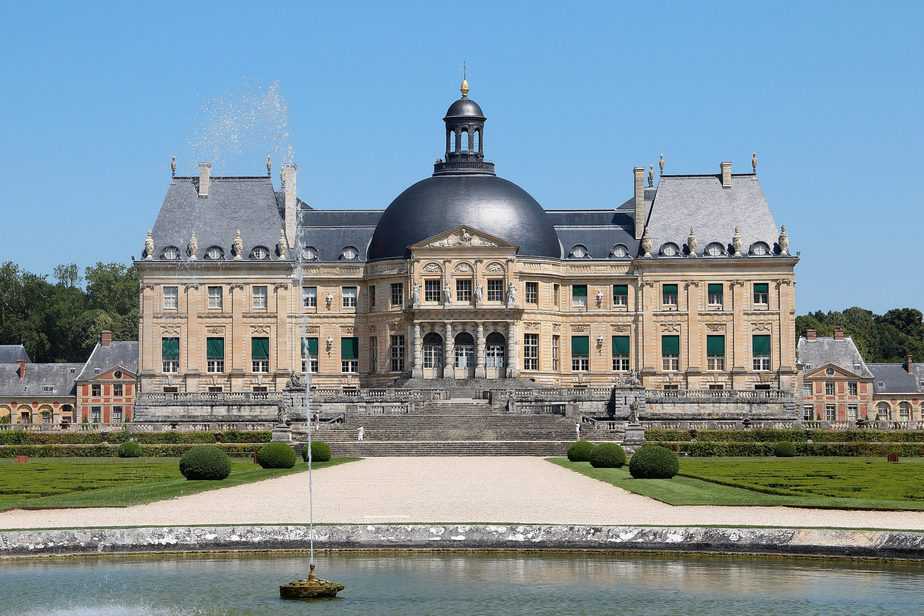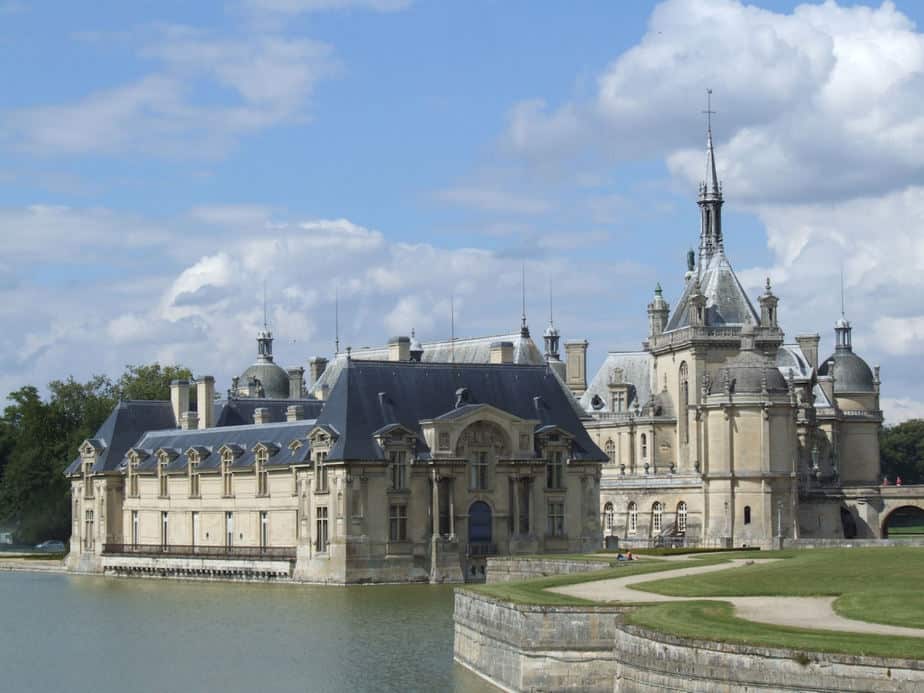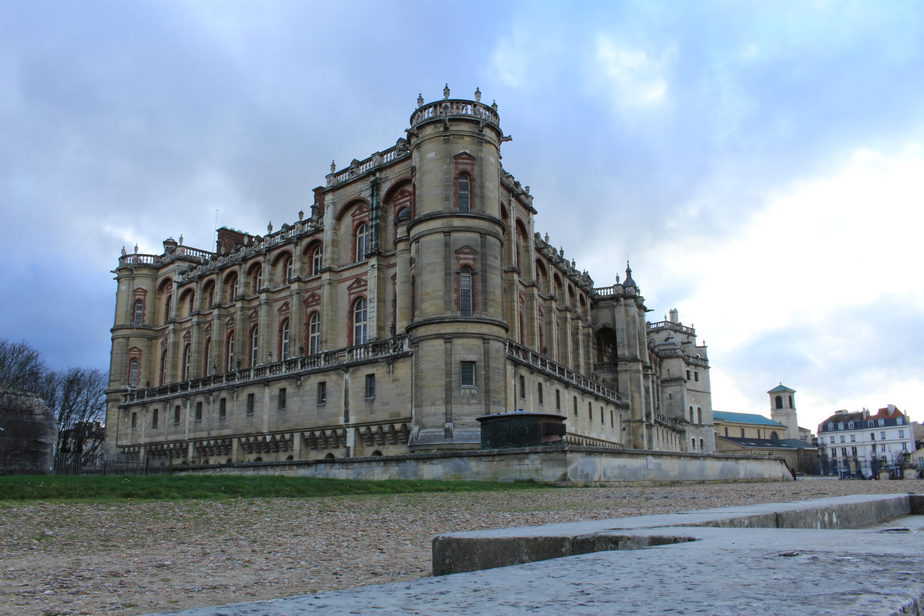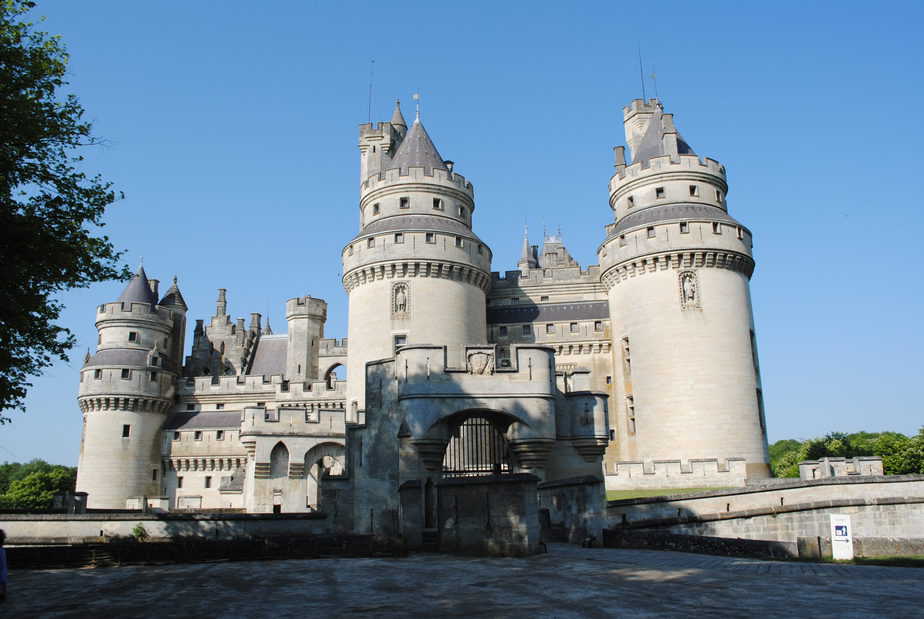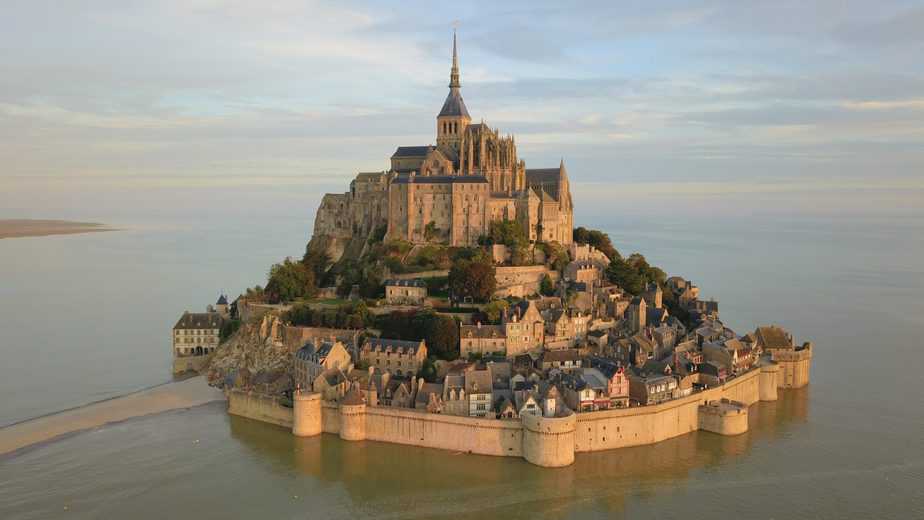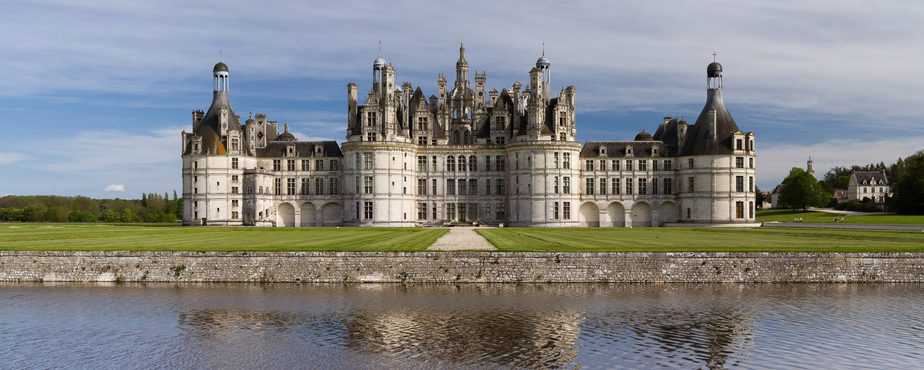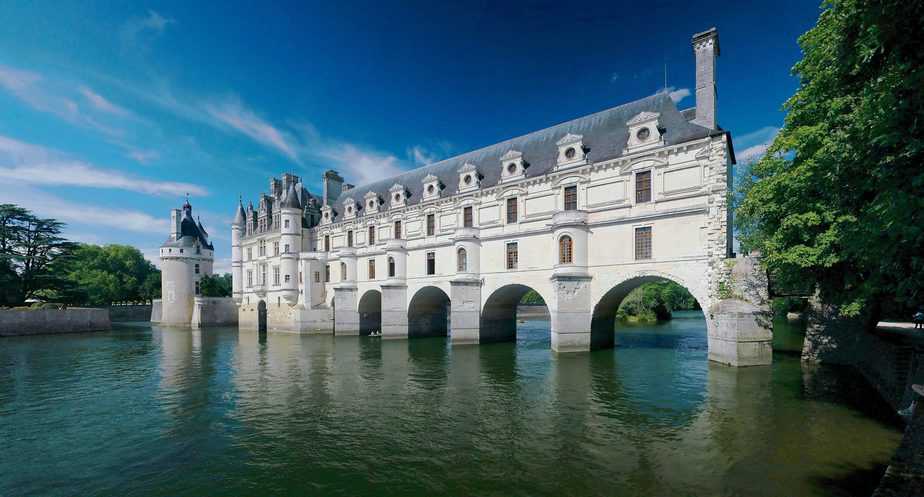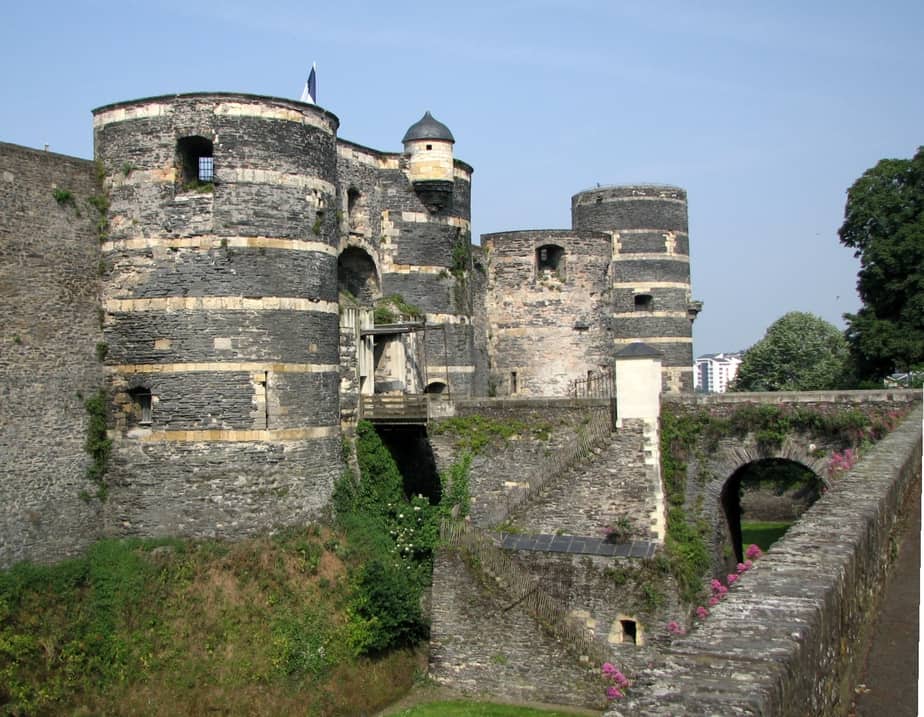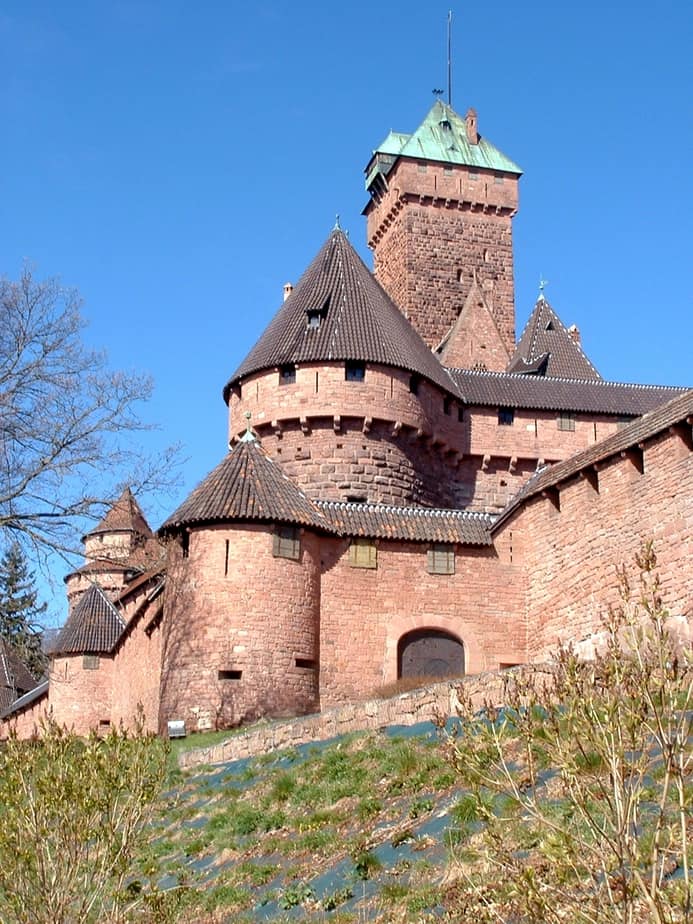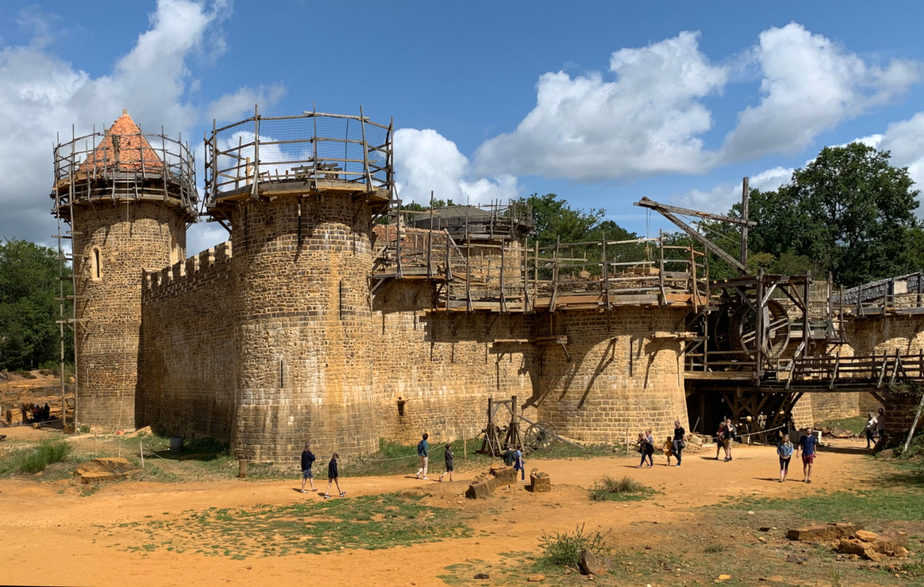Top 15 Most Beautiful Castles to Visit in France
1. Le Chateau de Versailles
We start by the most famous and the most visited of the French castle: Versailles!
It is very closely associated with the king Louis XIV, also called the Sun-King: the palace was a showcase for the glory and wealthiness of the country and its sovereign!
Louis XIV built in from a hunting lodge used by his father and expanded it at a tremendous cost in several stages.
In 1682 he took the decision to move inside with his court and administration. There he could control the nobility and be preserved from the Parisian riots.
The kings of France stayed in the palace until the Revolution in 1789 where a mob forced Louis XVI and Marie-Antoinette to come back to Paris. The furniture was dispersed but the palace tried to recreate the layout ever since then.
Visitors come to contemplate the splendid hall of mirrors, the exceptional gardens. They sometimes ventured to the side estates like the palaces of Trianon and Petit Trianon or the hamlet of Marie-Antoinette.
2. Château de Vaux-Le-Vicomte
The story of Vaux-le-Vicomte is closely connected to the story of Versailles. It was built by the first minister of Finances of Louis XIV Nicolas Fouquet. The courtier wanted to show-off by building this luxurious castle and invited all the court including his king to the inauguration party in 1661.
Louis XIV was humiliated by the display of his minister. Soon after, he had Nicolas Fouquet arrested for embezzlement and given a life sentence.
Louis XIV then took the team who built the castle of Vaux-le-Vicomte: the architect Le Vau, the painter Le Brun and the gardener Le Nôtre.
Unlike most of the big castle this is a private property open to the public. Because it is not well connected to Paris via the public transport, this castle does not get the attention it deserves. As a result, you will feel less disturbed by big crowds than in Versailles.
The owners of the castle also regularly organize events like fireworks and illuminations.
3. Château de Fontainebleau
Fontainebleau was a temporary residence of the kings and emperors, from the Renaissance to the XIXth century. It was a place to rest in a beautiful palace, to have a walk in the beautiful park and to hunt in the big forest surrounding it.
The king François I replaced the medieval castle. His court was transformed it into a place where the Italian culture of the Renaissance would be transmitted in France through Italian painters. It created the School of Fontainebleau, decisive in the creation of a French style of painting.
Some parts of the palace were transformed by different rulers over time but unlike many castles the furniture had been particularly well-preserved. The lovers of decorative art will particularly appreciate.
4. Château de Chantilly
The castle of Chantilly is strongly associated with a powerful family: the Condé. A cadet branch of the ruling Bourbon dynasty, one of its members nicknamed Le Grand Condé saved the country several times in the XVIIth century.
The gardens were designed by Le Nôtre before he built the ones of Versailles. The stables were so big and lavishly decorated that Le Grand Condé received several kings to dinner inside. You can find today the Horse Museum inside.
The splendid palace and gardens were heavily damaged by the Revolution, when the Condé had to go to exile.
After the extinction of the Condé line, Henri d’Orléans duke of Aumale obtained the property.
From 1876 to 1882 the palace was almost entirely rebuilt and given an impressive collection of precious books and paintings. Henri d’Orléans transmitted the castle with his beautiful park to the State.
5. Château de Saint-Germain-en-Laye
Along with Versailles and Vincennes, the castle of Saint-Germain-en-Laye is one of the most accessible from Paris via public transport.
The medieval castle has been sacked and destroyed during the Hundred Years War in the XIVth century. However, the beautiful Sainte Chapelle, modelled on the Parisian Sainte Chapelle, was preserved and is still visible.
The castle you can see today was built in the Renaissance by François I. It became one of the favorite palaces of the kings of France.
Louis XIV was born in this castle and he commissioned his gardener Le Nôtre to design the gardens and the main architect of Versailles, Jules Hardouin-Mansart, to modify the aspect of the castle.
Today nothing is left on the interiors of the castle. Instead the castle hosts the Museum of Archeology.
The gardens are now an open public park. It is particularly appreciated for the “Grande Terrasse” a 2,4 km walk with a view overlooking Paris and the western suburbs. Beyond the gardens, you can walk in the big forest or come back to the pleasant city of Saint-Germain.
6. Château de Pierrefonds
The castle of Pierrefonds seems to have emerged directly from the Middle Ages, preserved from the degradation of time. It is because this is a creation of the XIXth century inspired by the original medieval castle.
Amid the Hundred years war in 1396, Louis d’Orléans, perhaps the most powerful lord of the kingdom, commissioned a fortress. Used by the Condé family to rebel against the monarchy, it is besieged, taken and demolished in 1617.
But in the XIXth century, the Romantics painters and novelists rediscovered the site and found the ruins very picturesque. In 1857 the Emperor Napoleon III decides to give the restoration project to Eugène Viollet-le-Duc, best known as the man who restored Notre-Dame-de-Paris.
As for Notre-Dame, Viollet-le-Duc made his own invention, created a castle like it should have look like according to him. It is a great success!
On your visit, don’t forget to have a look at the cute village of Pierrefonds or to visit the palace of Compiègne a few kilometers away.
7. L’Abbaye du Mont-Saint-Michel
Unlike the others, this castle was not the house of some kings or powerful lords but of simple monks. They started to built the Abbay of the Mont-Saint-Michel in 709 around a site of pilgrimage and for many centuries it was extended and embellished.
The site offered also a great security as it is in the middle of a vast bay surrounded by quicksand and becomes an island when the tide is high. Sometimes it was used as a military fortress and a prison.
It is almost impossible to understand how the differents buildings were embedded into each others in this piece of rock. The rooms are empty but the site remains impressive and powerful, whether seen from afar or from very close.
8. Château de Chambord
Chambord is the most famous of the Châteaux de la Loire. A jewel built by François I in the Renaissance style from Italy with French military elements of architecture like the big towers.
It is very likely that Leonardo Da Vinci, who had been settled nearby in Amboise by the king, participated in designing the castle.
The king François eventually did not live much inside. Louis XIV completed the castle as a showcase for the monarchy with the main architect of Versailles: Jules-Hardouin Mansart.
Its façade is one of the most recognizable in the world. It is also famous for the huge forest encircled by a 32 km wall, the biggest forest park in Europe.
9. Château de Chenonceau
Chenonceau also blends French and Italian style or architecture. It is famous for its two-storey gallery above the river Cher.
The castle is nicknamed the Castle of the Ladies because many of the celebrities that built and transformed the palace were women.
We can evoke Katherine Briçonnet, wife of the minister of Finance, who commissioned and supervised the construction in 1513. Some decades later, the castle is successively embellished by two rival women: the mistress of the king Henri II, Diane de Poitiers, and his wife, the queen Catherine de Medicis.
It is today privately owned. It is renowned for the beauty of its façade but also the interiors and the gardens. You can pass under the gallery in a canoe or a boat.
10. Château d’Amboise
The history of the castle of Amboise is strongly associated with the king Charles VIII who transformed it in the late gothic style from 1492. Many of the rooms he built are still standing and can be visited with a pad to recreate the atmosphere of the early Renaissance.
This is where he died in 1598 in one of the most stupid death of French history: as he was crossing a door, his head violently hit the upper lintel provoking a cerebral hemorrhage…
Several kings of the Renaissance spent time in the palace. François I invited Leonardo da Vinci to stay in the nearby building, the Clos Lucé, another place of great interest opened to the visitors. The Italian genius is buried in the castle, in the Saint-Hubert Chapel.
11. Château d’Angers
Here is a heavy castle with thick walls from the era of the knights! Like many castles, it was a medieval fortress transformed in a residential palace at the end of the Hundred Years War.
The Château d’Angers was the residence of the powerful Dukes of Anjou. One of them remained a local legend: René d’Anjou or “the good king René”.
He ended up duke and count of an incredible number of territories and king of Naples, Jerusalem (in title only), Sicily and Aragon. It is possible to analyze his life as a succession of failures but he let an image of one of the last great medieval lord and sponsor of the arts.
The highlight of your visit will be the Apocalypse Tapestry. Between 1377 and 1382, 90 scenes of the Apocalypse of Saint John were represented. It is the biggest group of tapestries in the world.
12. Château comtal de Carcassonne
Another powerful fortress from the Middle Ages, especially the XIIth and the XIIIth century. The architect Viollet-le-Duc gave it back in the XIXth century its imposing look with its thick ramparts.
What makes it worth the detour is the integration of the castle of the Counts in a medieval citadel among the most impressive of the world: the Cité de Carcassonne. The double ramparts are 3km long containing 52 towers and overlooking the Aude Valley.
13. Palais des Papes d’Avignon
The popes have not always lived in Rome! In the XIVth century, the kings of France were powerful enough to impose the pope and its court to live in Avignon.
At the time, the city was just outside of the French kingdom, on the other side of the Rhone river.
6 popes lived in this palace. One can tell how much they mistrust the French kings by the size of the fortress, able to resist the most ferocious attacks.
The best moment to visit Avignon is in July. A very important festival of theater takes over the streets of the city for the “off festival” while the palace welcomes the “in” festival with famous actors and plays.
14. Château du Haut-Koenigsbourg
On top of a 800m hill, dominating the plain of Alsace, the Haut-Koenigsbourg stands proudly with its pink stones. Its french name derives from the german Hochkönigsburg which means the “high castle of the king”.
The castle of the XIIth and XVth century was destroyed by Swedish troops in 1633 during the Thirty Years War. The fortress was abandoned for centuries and Alsace became French shortly after.
When Germany took the territory in 1871, the emperor Wilhem II is offered the ruins of the castle. He asked his architect Bodo Ebhardt to rebuilt the castle as he looked like around 1500. The brand new castle was inaugurated in 1908.
The castle is reknown for its beauty but also for the wonderful panoramic view.
15. Château du Guédélon
This last one is a bit special. It is not a historical castle. It is a castle built by passionnate people supervised by scientists, using all the techniques from the Middle Ages.
The first stone of Guédelon was put in 1997 and this construction is supposed to last until 2022. It is not only a fun experience but a way to teach visitors and also to test the theories of the historians about how the castles were built.
It is possible to visit the site but also to sign in to take part in it!
Planning a trip to Paris ? Get ready !
These are Amazon’s best-selling travel products that you may need for coming to Paris.
Bookstore
- The best travel book : Rick Steves – Paris 2023 – Learn more here
- Fodor’s Paris 2024 – Learn more here
Travel Gear
- Venture Pal Lightweight Backpack – Learn more here
- Samsonite Winfield 2 28″ Luggage – Learn more here
- Swig Savvy’s Stainless Steel Insulated Water Bottle – Learn more here
Check Amazon’s best-seller list for the most popular travel accessories. We sometimes read this list just to find out what new travel products people are buying.







